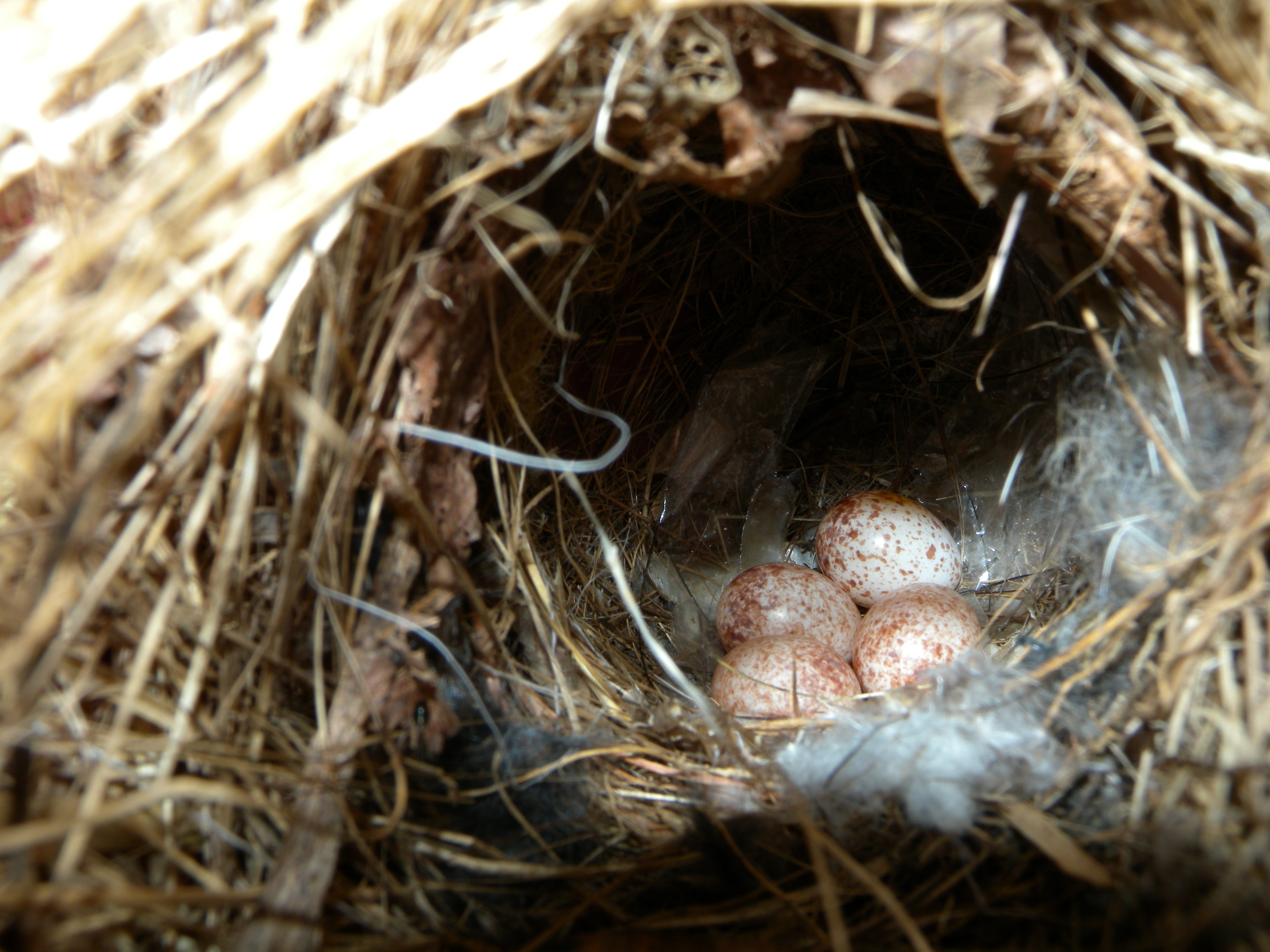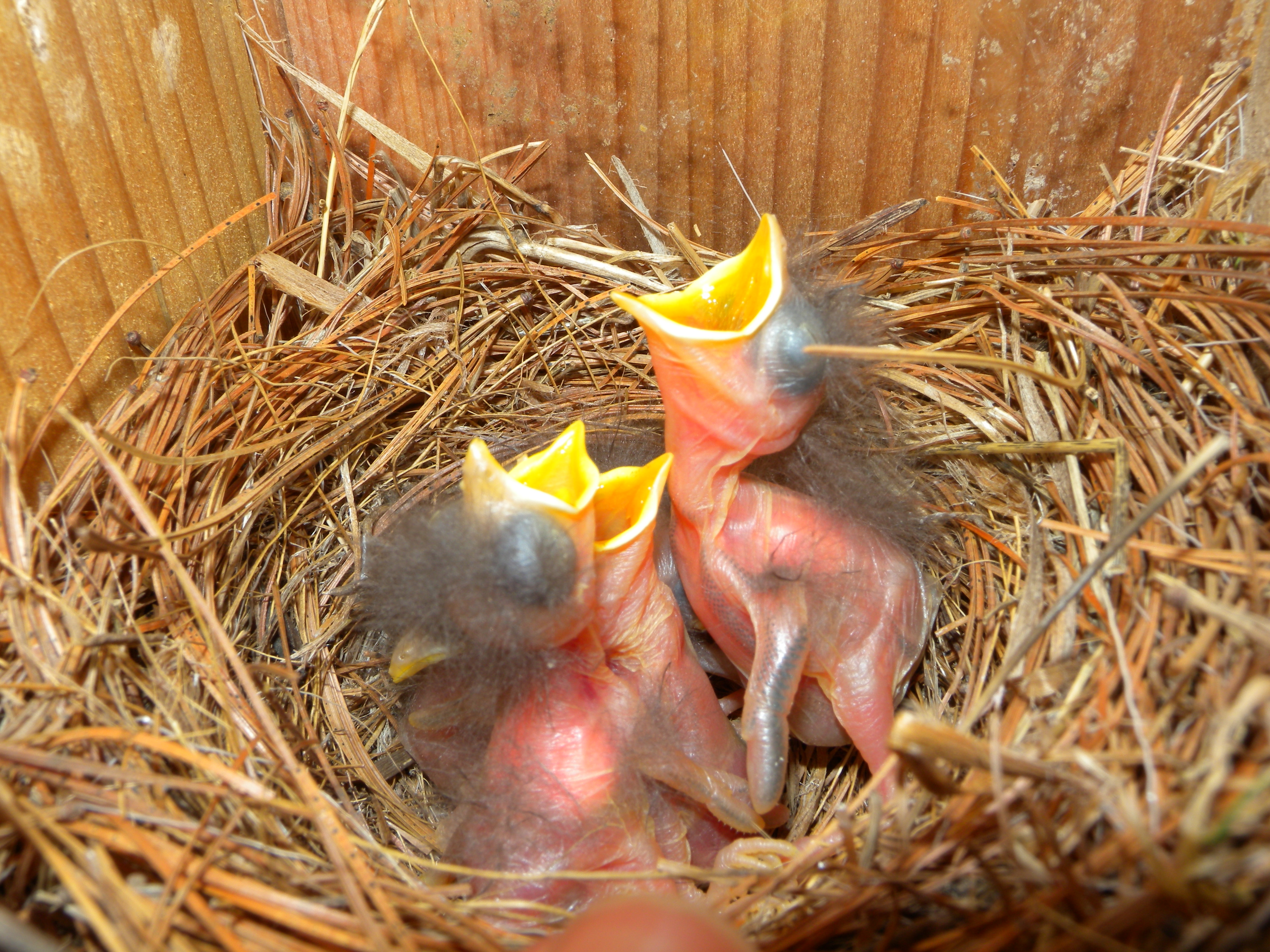
WAIT! If you’re a subscriber reading this in email format, before reading any further, please click on the title of the post right above in order to view the blog in the glory it was meant to have on the actual blog website.
________________________________________________________
One of last year’s accomplishments we are proud of is the initiation and success of our new Homeowner Bird Box Program. The following is an article I wrote about it and the joys of bird box ownership. If you don’t already have bird boxes in your yard, I encourage you to put one up this spring! Better yet, put it up now and you might get a Downy Woodpecker or a bunch of bluebirds roosting in it during these cold winter nights.
It was late March as I stood in front of the porch door, gazing out at the bustling bird feeders set up buffet-style on the railing of our deck. Finches, chickadees, titmice, blue jays, cardinals and wrens were contentedly stuffing their little beaks full of hulled sunflower seeds on this blustery, wintery spring day. As I did every day that winter, I was wistfully waiting for “someone in particular” to appear in front of me at the window feeder stocked with dried mealworms and insect-filled suet balls. My gaze drifted off for a minute until I heard a familiar ‘tap’ on the window as the weight of a bird landed briskly on the feeder.
There before my eyes was the most beautiful deep Mediterranean blue surrounding a round red breast under an inquisitive cocked head peering at me through the class. “They don’t call it the bluebird of happiness for nothing,” I thought as my heart skipped that familiar beat. As he grabbed a dried worm and shot me one last suspicious look before fluttering off, I couldn’t help but notice a twinkle in his eye.
I raced out into the backyard to check the status of our new bluebird box, and sure enough, there he was – and there SHE was- proudly perched on top of the box of which the pair had taken ownership. My spirit took wing with elation and anticipation of the joys that would be mine as guardian of this bird box throughout the coming season!
The thrills of bird box ownership are indeed abundant, as the forty participants in the Willistown Conservation Trust’s (WCT) Homeowner Bird Box Program discovered last year. Through this new program, homeowners were able to advance bird conservation in their own yards by maintaining and monitoring bird boxes that were installed in early spring by a team of WCT bird box experts. The teams visited the properties in the Willistown area, assessed the habitat, offered advice on which particular species of birds could be attracted to that available habitat, and placed the boxes for optimum probability of birds using them.
The WCT experts remained in contact with the homeowners throughout the remainder of the breeding season in order to track the success of the 113 bird boxes that were installed throughout the greater Willistown area. Many of the boxes provided the homeowners with great enjoyment as they and their children watched families of bluebirds, house wrens, chickadees, tree swallows, and kestrels fly in and out of the boxes hundreds of times a day feeding their ravenous nestlings.

Some were lucky enough to witness the fledging, when the young take their first staggering flight out of the box and into the world! There is no better bond formed with nature than when a child gently opens a bird box and has his first peek at a bunch of exquisitely speckled little eggs or tiny baby birds, their wobbly necks outstretched and beaks gaping wide with expectation.


Each species of bird has specific habitat requirements, but sometimes the motto, “if you build it, they will come,” applies in even marginal habitat. One of the homeowners blew the WCT experts away when she called and exclaimed excitedly, “I have bluebirds!!”

She bought a bluebird box but was admonished not to expect bluebirds because she did not have a big enough grassy area in her wooded backyard to suit their ideal habitat needs. Consequently, the bird box experts expected to hear that she had one of the other usual occupants like chickadees or wrens. Not only did the bluebirds take up residence in her “less-than-ideal habitat,” but they successfully fledged two broods of young from that box that summer!

In addition to connecting homeowners to nature, bird boxes also serve as essential conservation tools by providing vital habitat to cavity-nesting birds, many of which are declining. Eastern Bluebird populations in Pennsylvania, for example, were down by 90% in the mid-1900s as a result of habitat loss, pesticides, and competitive invasive species like House Sparrows and European Starlings.
Today, our bluebird has recovered because of closely monitored nest boxes that are safeguarded against invasive competition. However, it is still threatened, like many other insect-eating birds, by pesticide use on lawns and agricultural lands. There are a host of other serious pressures facing our birds today: from feral and house cats killing 3 billion birds annually in the U.S. alone to window collisions killing up to 1 billion birds annually. It’s no wonder we’ve lost half of the birds that filled the skies just 40 years ago.
Dick Eales, the Chair of WCT’s Bird Conservation Committee, was the go-getter who dreamt up this addition to WCT’s outreach activities in order to benefit as many birds as possible. Additionally ,the Bird Box Program helps engage more people in conservation and provides the opportunity to raise awareness about the need to not only protect the natural areas we have left, but to begin to see our yards as habitat.
When people understand that conservation can happen in their own backyards, suddenly that long awaited bluebird of happiness taps on the window.
Blake
Visit nestwatch.org to learn about nests and get involved with the Cornell Lab of Ornithology’s citizen science project.


